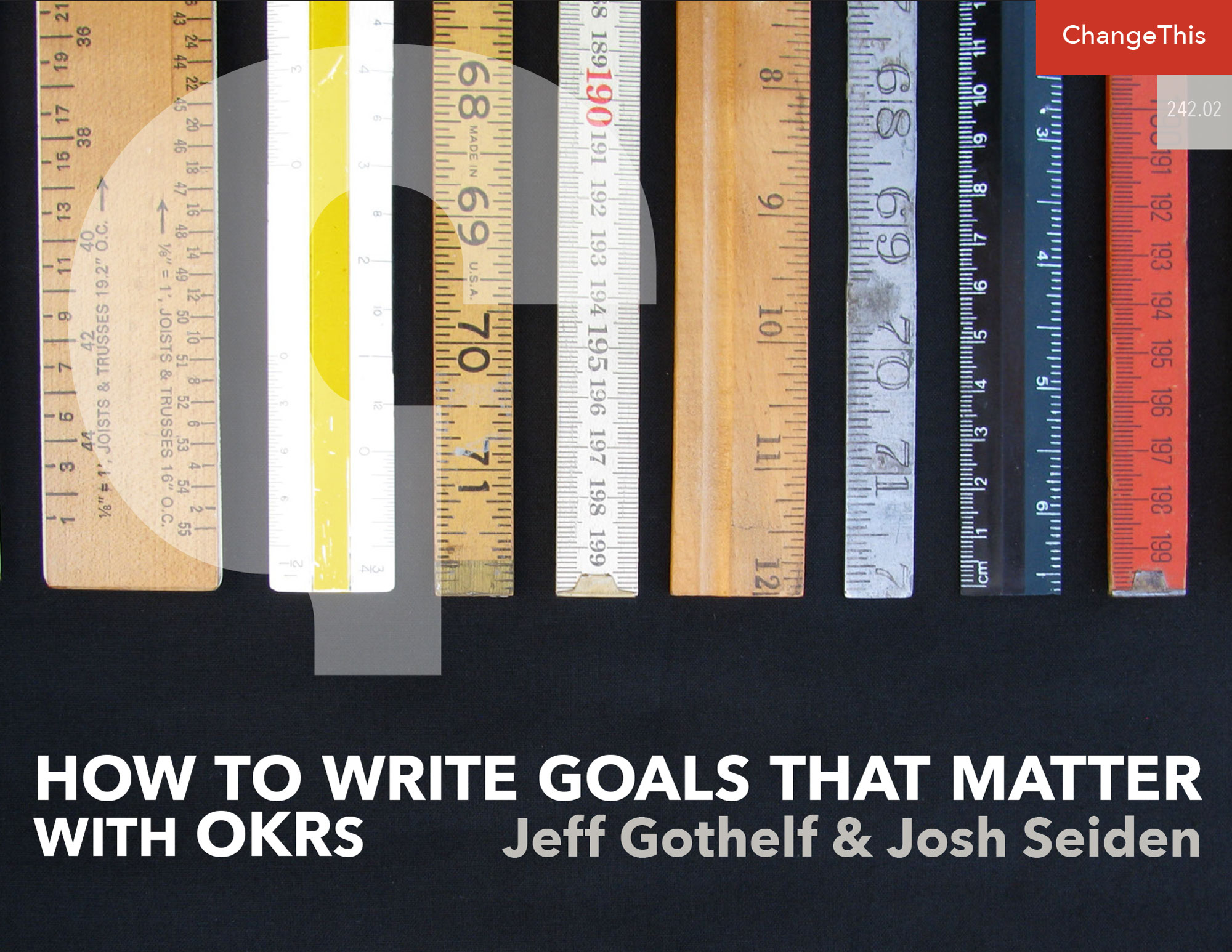How to Write Goals that Matter with OKRs
It’s goal-setting season once again.
Every year we get together as a company and ask our various leaders and teams to predict what they’ll achieve in the year to come. And, every year, our teams comply with the request, coming up with their best guesses on ROI, revenue, and other KPIs based on last year’s results.
Inevitably, like last year’s goals and the year before, these guesses will turn out to be wrong. Or something will change in the market, and they’ll be ignored. Or a new executive will come in and demand their own version of company goals.
This cycle, driven by the uncertainty of modern business, drives down the trust our teams have in their goals and the company’s. How can we break the cycle and provide teams with a way to create goals that not only matter to the company and its customers, but can also bend and flex with the changes the market will undoubtedly throw at us?
Change the benefactor of our goals
If the benefactor of last year’s success metrics was your company, that might make sense from a high-level view. But dig a bit deeper and you’ll find that company-centric goals drive behaviors that often end up straining customer relationships in unsustainable ways. They also don’t take into account changing customer needs and expectations.
What if we changed the benefactor of your goals from the company to your customers?
Enter OKRs.
Objectives and Key Results are a goal-setting framework for teams that focuses on delivering continuous value to your customers. Instead of rewarding your teams on revenue and profit margins, you focus on the customer and user behaviors that drive those organizational metrics.
OKRs shift your teams away from delivering a specific product to market and, instead, ensure that your teams are constantly aware of what customers need and how those needs are being shaped by competitors as well as the products and services they use every day.
When using OKRs to set goals, you reward and incentivize positive impact on customer behavior. You identify the problems getting in the way of their success and work to find the best solution to alleviate that problem. The difference when using OKRs is that “best” means whatever idea had the most positive impact on your customers as measured by specific changes in how they use your products and services.
OKR-driven goals create teams who care about their work
In a traditional situation, teams typically have goals handed to them. To many it feels like having a target painted on their back: “Hit this number or else.” Self-preservation is often the driving factor in how these teams work. They’ll do whatever they need to hit the number—even if that means having a negative impact on the customer, the company, or the brand.
Remember the Wells Fargo scandal in 2016? The leadership team at Wells Fargo challenged the company to drive up the number of new accounts. And the staff complied. They opened up accounts for their infant children, dead relatives, and pets. When the story broke, the company ended up paying millions in fines and the brand, as well as trust in the bank, tanked.
When a team uses OKRs, it determines its own goals. Team members start off by declaring an objective—a qualitative end-state for their user or customer they’d like to see when they complete their initiative. They then add in up to three key results—quantitative measures of human behavior that tell them they’ve achieved their objective. In neither the objective nor the key result does the team commit to a specific output. Instead, they work on a series of their own ideas to discover the best way to drive the behavior change they quantified in their key results.
Teams have complete ownership of the goal with OKRs. They write the goal themselves. They come up with their own solution ideas and they work together to figure out what is valid and what has to be adjusted or discarded.
Working on a self-determined path increases the passion, focus, and effort teams put towards their work. To them, it’s their work. And their work matters.
OKRs flex with continuous change
Traditional goals don’t flex with new information. They’re often discarded or ignored. OKRs are flexible by design. They allow your teams to continuously explore better ways to meet customer needs. Since those needs don’t stay fixed, teams are constantly on the hunt for improvements.
Success isn’t measured in hitting a KPI or shipping a specific product to market. Success is always measured in terms of the customer. Is it easier for them to transact? More efficient? More delightful? Because of this, OKRs are far less likely to be ignored or discarded. There’s never a situation where satisfying the customer doesn’t make sense.
A side effect of working with OKRs is the teams’ need to always understand the current state of their customers. This ensures customers are always part of the process and that decisions aren’t made in a vacuum. Teams that are most successful with OKRs know their customers completely and are in sync with their evolving needs.
Goals that matter = work that matters
When goals feel like they are “throwaway,” the work produced often resembles the same. Teams that work with OKRs are invested in their customers’ success. Even work that didn’t have the impact the team hoped for isn’t considered “throwaway.” It’s a learning opportunity and ensures that the team’s next effort will be better than its last. Every team activity matters and ultimately produces better work and the results to match.




